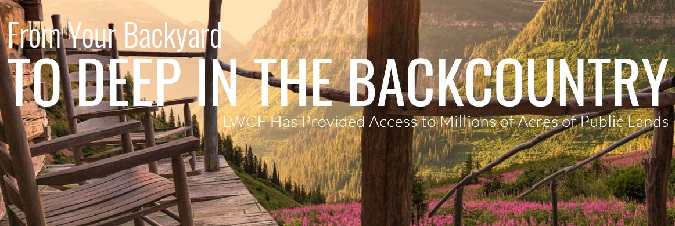
A new, interactive online report by Backcountry Hunters & Anglers focuses on the federal Land and Water Conservation Fund, featuring background and compelling stats, spotlighting projects across the U.S. that testify to the program’s efficacy, and driving visitors to an action portal to urge action by Congress to keep the LWCF alive.
“From your backyard to deep in the backcountry, the LWCF has provided access to millions of acres of public lands,” visitors to the BHA site are reminded about the 54-year-old program, which comprises more than 40,000 project sites, has conserved 7 million acres and costs taxpayers absolutely nothing.
“The story of the LWCF – an attempt by Congress to conserve some of our nation’s vast riches, for the betterment of society at large – is the story of who we are as a citizenry,” said BHA President and CEO Land Tawney. “The LWCF enables us to secure forever our most valuable lands and waters, our most important fish and wildlife habitat, and our most critical access to great places to hunt and fish.
“In order to make this story one of crisis averted, however, members of Congress must unite and take action before the LWCF expires at the end of September,” Tawney continued. “We the people are raising our voices and sending a strong and uncompromising message to our elected officials: Stand up for the Land and Water Conservation Fund. Stand up for the best of who we are as a nation.”
BHA profiles a series of key LWCF project sites – LWCF “success stories,” which represent the best of what the fund can achieve, along with projects “hanging in the balance” – needed conservation and access efforts that could permanently languish should Congress allow the LWCF to sunset on Sept. 30.
“It is one of the most successful programs in the history of our nation,” BHA states. “The projects it has funded have fueled a huge economic engine, creating the kind of communities that Americans want to live in, raise their families in, invest in and protect.
However, “LWCF is also one of the least known or understood programs in our nation. The vast majority of citizens who benefit every day from the LWCF has no idea that it exists. … Now is the time for Americans to learn about the LWCF, what it is, what it has accomplished, and what is at stake if it taken away from us.”
